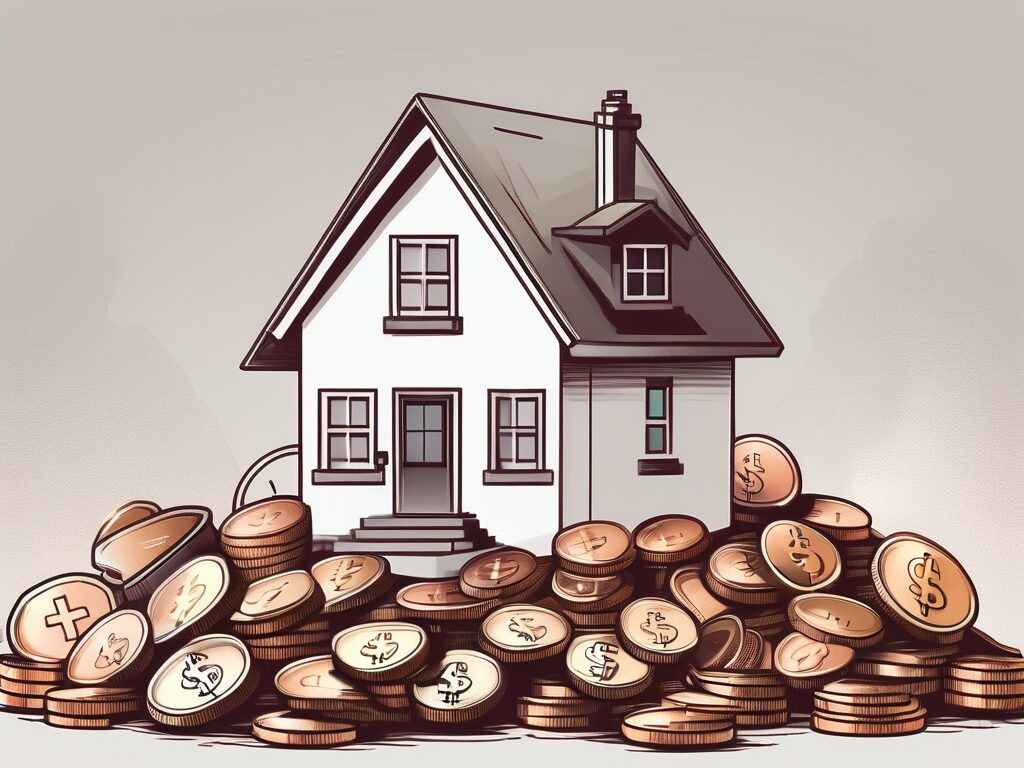
Agent A-Team or Solo Superhero? Finding the Right Real Estate Partner for Your Selling Journey in Wildwood Florida
When it comes to selling your home in Wildwood, Florida,…
January 29, 2024
Buying a home is an exciting milestone, but understanding the complex world of mortgage payments can be daunting. To navigate this process with confidence, it’s crucial to have a solid grasp on the various components that make up your mortgage. In this comprehensive guide, we will break down the key elements and equip you with the necessary knowledge to calculate your first mortgage payment accurately.
When you secure a mortgage, several components come into play. It’s essential to comprehend each element to accurately calculate your monthly mortgage payment. Let’s demystify these components step by step.
One of the most critical components of your mortgage is the interest rate. The interest rate determines how much you will pay in interest over the life of your loan. It is influenced by factors such as your credit score, the current market conditions, and the type of mortgage you choose. Understanding how the interest rate affects your monthly payment can help you make informed decisions about your mortgage.
Another component to consider is the loan term. The loan term refers to the length of time you have to repay your mortgage. Common loan terms include 15 years and 30 years. Choosing the right loan term for your financial situation is crucial. A shorter loan term may result in higher monthly payments but can save you thousands of dollars in interest over the life of the loan. On the other hand, a longer loan term may have lower monthly payments but can result in paying more interest over time.
Amortization refers to the process of gradually paying off your mortgage over time. Each payment made towards your mortgage includes both principal and interest portions. Over the years, the ratio between principal and interest shifts. In the early years of your mortgage, a larger portion of your monthly payment goes towards interest, while in the later years, more goes towards the principal. Understanding this dynamic is crucial in estimating your monthly mortgage expense accurately.
It’s important to note that some mortgages offer the option of making bi-weekly payments instead of monthly payments. By making bi-weekly payments, you can pay off your mortgage faster and save on interest. This option can be beneficial for borrowers who have the financial flexibility to make more frequent payments.
Property taxes are a significant part of homeownership expenses. These taxes vary from state to state and are based on the assessed value of your property. To budget effectively, it is essential to understand how property taxes are calculated and whether they are included in your mortgage payment or paid separately.
In some cases, lenders may require borrowers to establish an escrow account to cover property taxes and insurance. This means that a portion of your monthly mortgage payment goes into the escrow account, and the lender pays your property taxes on your behalf. Understanding how property taxes are handled in your mortgage can help you plan your budget accordingly.
Securing homeowner’s insurance is essential to protect your investment. It is crucial to understand how insurance premiums are calculated and whether they are included in your mortgage payment. The cost of homeowner’s insurance can vary based on factors such as the location of your home, the age of your home, and the coverage options you choose.
Additionally, some homeowners may need to obtain additional insurance coverage, such as flood insurance or earthquake insurance, depending on their location. Understanding the different types of insurance coverage available and assessing your specific needs can help you determine the appropriate coverage for your home.
By obtaining the appropriate coverage, you can ensure financial security and peace of mind for you and your home. It’s important to review your homeowner’s insurance policy regularly to ensure it adequately covers your property and possessions.
Mortgage insurance is an additional expense that some homeowners may need to pay. This insurance protects the lender in case the borrower defaults on the loan. Understanding how mortgage insurance works and when it is required will help you accurately estimate your total mortgage payment.
When you apply for a mortgage loan, the lender will assess your financial situation, including your credit score, income, and the amount of money you plan to put down as a down payment. Based on this assessment, the lender will determine if you are a high-risk borrower or not. If you are considered high-risk, the lender may require you to purchase mortgage insurance.
Mortgage insurance comes in different forms, but the most common type is private mortgage insurance (PMI). PMI is typically required if you have a down payment of less than 20% of the home’s purchase price. It is important to note that PMI is not the same as homeowner’s insurance, which protects you as the homeowner in case of damage to your property.
So, how does mortgage insurance work? Let’s say you purchase a home for $300,000 and put down a 10% down payment, which amounts to $30,000. Since your down payment is less than 20%, your lender may require you to obtain PMI. The cost of PMI is usually a percentage of your loan amount, and it is added to your monthly mortgage payment.
For example, if your PMI rate is 0.5% and your loan amount is $270,000 (after subtracting your down payment), your annual PMI cost would be $1,350 ($270,000 x 0.5%). This amount is then divided by 12 to determine your monthly PMI payment, which in this case would be $112.50 ($1,350 / 12).
It is important to note that PMI is not a permanent expense. Once you have paid down your mortgage balance to 80% of the home’s original appraised value, you can request to have PMI removed. This can be done by contacting your lender and providing evidence that your loan-to-value ratio has reached the required threshold.
While mortgage insurance may seem like an additional burden, it allows lenders to offer loans to borrowers with smaller down payments. Without mortgage insurance, lenders would be less likely to approve loans for those who cannot afford a large down payment, making homeownership less accessible for many individuals.
It is always a good idea to consult with a mortgage professional to fully understand the requirements and costs associated with mortgage insurance. They can help you navigate through the process and provide you with personalized advice based on your specific financial situation.
While your mortgage payment covers various expenses, there are certain costs that are not included. These may include utilities, maintenance fees, and homeowners association dues. By understanding which expenses are excluded, you can effectively budget for these additional costs and avoid any financial surprises.
When it comes to homeownership, it’s important to have a clear understanding of all the expenses involved. While your mortgage payment is a significant part of your monthly financial obligations, there are other costs that you need to consider. These excluded expenses can vary depending on factors such as the type of property you own, its location, and any additional services or amenities provided.
One of the most common expenses excluded from your mortgage payment is utilities. This includes electricity, water, gas, and other essential services needed to maintain your home. While some mortgage lenders may offer the option to include utilities in your monthly payment, it is more common for homeowners to be responsible for these costs separately. It’s important to factor in these expenses when budgeting to ensure that you can comfortably cover them on top of your mortgage payment.
In addition to utilities, maintenance fees are another expense that is typically not included in your mortgage payment. These fees are often associated with properties that are part of a homeowners association (HOA) or a condominium complex. The fees go towards the maintenance and upkeep of common areas, such as landscaping, pool maintenance, and building repairs. It’s important to carefully review the terms and conditions of your HOA or condominium agreement to understand the exact amount and frequency of these fees.
Homeowners association dues are another cost that is excluded from your mortgage payment. These dues are typically paid by homeowners who live in a community or development with shared amenities and services. The dues go towards the maintenance and management of these shared facilities, such as a clubhouse, gym, or security services. The amount of these dues can vary depending on the amenities provided and the overall management of the community.
It’s worth noting that while these expenses are not included in your mortgage payment, they are still important to consider and budget for. Failing to account for these costs can lead to financial strain and potential difficulties in maintaining your property. It’s recommended to create a comprehensive budget that includes all your housing-related expenses, including mortgage payment, utilities, maintenance fees, and homeowners association dues.
By understanding and planning for these excluded expenses, you can ensure that you have a realistic view of your overall homeownership costs. This will help you make informed decisions about your budget, savings, and future financial goals. It’s always a good idea to consult with a financial advisor or mortgage professional to get personalized advice based on your specific situation and needs.
Calculating your mortgage payment doesn’t have to be overwhelming. By utilizing some helpful tips and tricks, you can simplify the process and make accurate estimates. From utilizing online mortgage calculators to consulting with mortgage professionals, these resources will assist you in navigating the sometimes complex world of mortgage payment calculations.
One helpful tip is to use an online mortgage calculator. These calculators allow you to input your loan amount, interest rate, and loan term to get an estimate of your monthly mortgage payment. They can also factor in additional costs such as property taxes and homeowner’s insurance, giving you a more accurate picture of what your total payment will be. Many online mortgage calculators are free to use and can be accessed easily from your computer or smartphone.
Another useful trick is to consult with a mortgage professional. These experts have extensive knowledge and experience in the mortgage industry and can provide valuable insights into the calculation process. They can help you understand the various components that make up your mortgage payment, such as principal, interest, taxes, and insurance. They can also guide you through the different types of mortgages available and help you choose the one that best fits your financial situation.
In addition to using online calculators and seeking professional advice, it’s important to understand the different elements that make up your mortgage payment. One key component is amortization, which is the process of paying off your loan over time. Understanding how your loan is amortized can help you determine how much of your monthly payment goes towards principal and how much goes towards interest.
Property taxes are another factor to consider when calculating your mortgage payment. These taxes are typically assessed by your local government and are based on the value of your property. The amount you owe in property taxes can vary depending on where you live, so it’s important to research the tax rates in your area and factor them into your monthly budget.
Homeowner’s insurance is also an important consideration. This insurance protects your home and belongings in the event of damage or loss. The cost of homeowner’s insurance can vary depending on factors such as the value of your home, its location, and the coverage options you choose. It’s important to include the cost of homeowner’s insurance in your monthly mortgage payment calculation to ensure you’re adequately protected.
Mortgage insurance is another expense that may be included in your monthly payment. This insurance is typically required if you have a down payment of less than 20% of the home’s purchase price. It protects the lender in case you default on your loan. The cost of mortgage insurance can vary depending on factors such as your credit score and the loan-to-value ratio. It’s important to factor in this cost when calculating your monthly mortgage payment.
In conclusion, understanding the components that make up your mortgage payment is vital for accurate calculation. By dissecting these elements, including amortization, property taxes, homeowner’s insurance, and mortgage insurance, you can budget effectively for your monthly mortgage payment. Additionally, being aware of the expenses excluded from your mortgage payment and utilizing helpful tips and tricks will make the process smoother and more manageable. Armed with this knowledge and a clear understanding of the various components, you can confidently calculate your first mortgage payment and embark on your homeownership journey with peace of mind.

If you want the Richr team to help you save thousands on your home just book a call.
 Book a call
Book a call